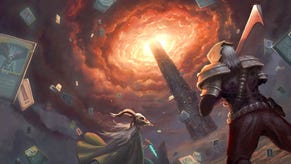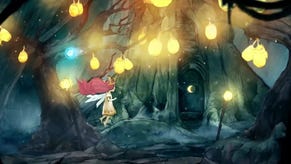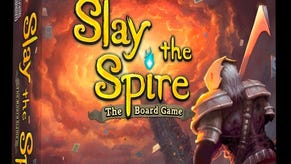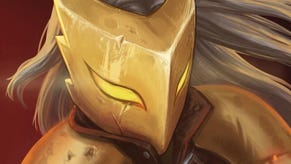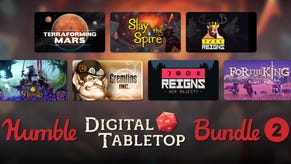Slay the Spire tips and tricks: Our essential advice to help you reach the top
Removing floors.
So you're playing Slay the Spire: well done! It's a wonderful game. We recommended Slay the Spire in our review and declared it one of the best games of 2019. In other words, you have exquisite taste. But I tell you what: it's a tricky game isn't it?
Slay the Spire is a harder game than it looks but that's the beauty of it. It's tricky but this makes it a pleasure to figure out.
Losing and tweaking your approach with each try is the game, so don't think of it as failing but as learning, and enjoy it. Think of Slay the Spire as an endlessly deep puzzle, one which gets harder each time you complete it - each time you climb and conquer the Spire.
To give you a leg up, our selection of Slay the Spire tips and tricks can help you get over some of those initial hurdles - or for more advanced players, give you some ideas on how to improve your runs.
Looking for more advice? We have a specific page on The Watcher for you to check out when you're ready.
Slay the Spire tips and tricks
Given the random nature of the game, you have to think for yourself every time you play - there are no walkthroughs or guides you can stick to every step of the way.
But there are essential pieces of advice which will help you on your way:
What to choose at the whale
- When you talk to the whale at the beginning of the run, the middle two options - if you've had a good run before (beaten Act 1) - are the most worthwhile. If you're beginning from scratch, take extra hit points.
- The worst options are lowering the health of opponents in your next three combats to one hit point, because they're easy enough already; transforming cards because it's random and you might get something rubbish; and obtaining a Curse because it can be crippling in such a small deck (unless there's a shop early on).
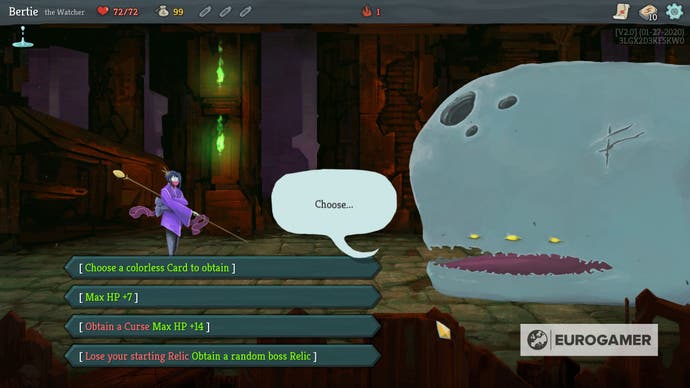
Keep your deck small
- You do not have to take a card each time you're offered one after a fight. Big decks lower your chances of drawing the cards you want, when you want, so small decks are often preferable. A golden size seems to be 15 cards.
- 11 cards isn't a good amount to have. The 11th card won't be drawn until round three and will miss the first Discard pile reshuffle, so you'll have to wait even longer to use it again. It's far better to have 10 cards than 11. Or consider going up to 15 or 20.
- Given that you begin the game with 10-12 cards, keeping your total at around 15 can be really tricky. The secret is in removing the basic Strike and Defend cards you begin the game with because you will pick up one-cost attacks and defends that are simply better.
- Bear in mind that card rewards will get better the further you go. You will be offered upgraded versions of cards further in, which saves you having to upgrade at Campsites. You will need a few cards to get you going but if you can hold out after this, try to.
- Keeping your deck small means you can upgrade a larger percentage of your deck, meaning each card is individually as powerful as it can be and there's no weak link. Therefore, try to Smith rather than Rest when you're at a Campsite unless you are in dire need of health.

- Grey bordered cards are common, blue bordered cards are uncommon, and gold bordered cards are rare. Cards with green writing and a plus sign are upgraded. Remember, just because a card is rare doesn't mean it's better for your deck.
- Try to theme your deck around a general strategy. If you can get some synergy going between a few different cards, you're well on your way to becoming a Slay the Spire pro. Refuse cards which don't fit in. I'll talk about themes for classes later on.
- You can check how many and which cards are in your deck using the deck icon in the top right corner of the screen. There's a number by it which is your card total. Click on it to see what's in there. You can check it before you choose Rewards after battle.
- Be careful of zero energy cards. They seem great but they take up a valuable slot in your deck and if you're ending rounds with energy unspent, maybe a higher-cost card would be a stronger pick.
Plan your map route
- It's worth taking time to plot a course through the map, and to note which boss you'll fight at the end of it - they each have their own sketch you'll come to recognise them by. This gives you time to prepare your deck accordingly. This is particularly useful in Act 3.
- In Act 3, the Time Eater boss is best fought with passive powers for a longer fight; the Awakened One requires survivability and a lot of damage to kill the accompanying Cultists quickly; and against Donu and Docu you'll need a way to take Donu out before his strength buffs escalate.
- In Act 1, question mark random events are weak and getting cards is more important, so pick a route with battles in. In Act 2, question mark events are better and battles are harder, so go for more question marks.
- Fight elites! Don't be scared, especially in Act 1. Elites are the horned heads on the map. They give you a relic and a card so are more worthy of your time than standard fights. Look for well-positioned rest sites (campfires) before or after elites to recuperate.
- Broadly, Act 1 favours front-load damage, Act 2 needs crowd control and damage scaling (a way to deal big damage), and Act 3 is about building survivability.
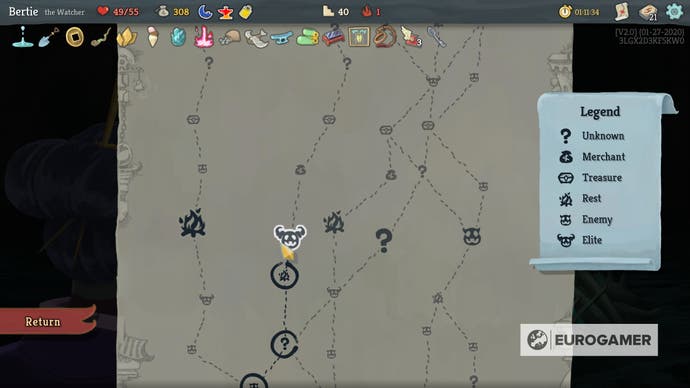
Merchant shopping
- There's no point visiting a merchant until you have money to spend there - around 300 gold - so plan your route accordingly. Also, in Act 3, there's no point going to the final boss with money leftover, so a shop stop just before makes sense.
- Control yourself while shopping! Just because something is on sale doesn't mean you need it. Consider buying a relic and removing a card instead. Potions aren't typically worth spending money on.
- Bear in mind that not all relics are worth the money, but relics are almost always useful. Some grant game-winning advantages.
Things to remember in combat
- Pay attention to your enemy's abilities, either their buffs or the debuffs they've put on you. Some bosses and mini-bosses get stronger each time you use a Skill or a Power so be careful about playing into their traps.
- Some enemies hit back with Thorns each time you damage them so save up big single-hits for them rather than multi-attacks. Block helps but it will be worn down by their retaliation. Don't let them chip away at your very valuable health if there's an alternative. Do it properly.
- Concentrate. Slay the Spire is a turn-based game so there's no need to rush your go. Check and check again. I can't tell you how many times I've screwed up because I switched off.
- Check your Draw pile because it allows you to make an educated guess at what's coming next. Your Draw pile is the deck icon in the bottom left of the screen. It shows you which cards are still to draw although not the order you will draw them. You will draw five cards.
- When your Draw pile runs out, your Discard pile will be shuffled to become your new Draw pile. Note, any cards in your hand will have to wait for the next Discard reshuffle to come back around.
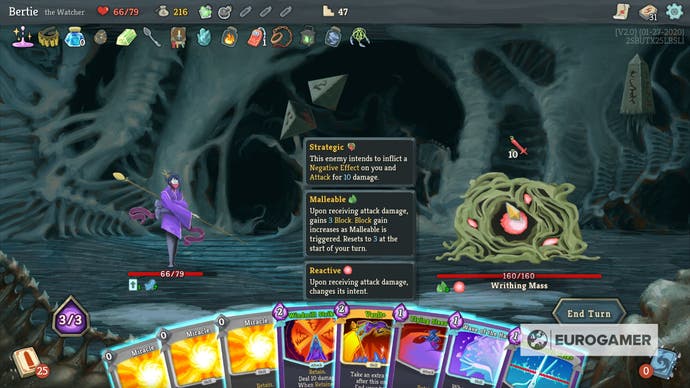
Looking for more advice? We have a specific page on The Watcher for you to check out when you're ready.




